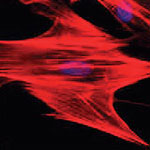Showing Spotlights 2161 - 2168 of 2785 in category All (newest first):
 The two differing approaches that the European Union and the U.S. take in tackling converging technologies is exemplary for the philosophical difference in how these two geographies approach the development of new technologies. Policies in the U.S., especially during the past eight years, have been, well, shaped is not the right word here, let's say drifting, towards a purely market-driven approach to technology development. In contrast, the European approach places the emphasis on the agenda-setting process itself. Rather than letting the market call all the shots, the European approach favors a guided development where societal, safety and environmental aspects are incorporated into the decision-making process. The main task of the EU-funded project CONTECS was to develop ideas for a comprehensive and integrated European agenda with regard to converging technologies. The project has now delivered its final report.
The two differing approaches that the European Union and the U.S. take in tackling converging technologies is exemplary for the philosophical difference in how these two geographies approach the development of new technologies. Policies in the U.S., especially during the past eight years, have been, well, shaped is not the right word here, let's say drifting, towards a purely market-driven approach to technology development. In contrast, the European approach places the emphasis on the agenda-setting process itself. Rather than letting the market call all the shots, the European approach favors a guided development where societal, safety and environmental aspects are incorporated into the decision-making process. The main task of the EU-funded project CONTECS was to develop ideas for a comprehensive and integrated European agenda with regard to converging technologies. The project has now delivered its final report.
Aug 25th, 2008
 Regenerative medicine is an area in which stem cells hold great promise for overcoming the challenge of limited cell sources for tissue repair. Stem cell research is being pursued vigorously in laboratories all over the world (except in the U.S., where federal funding for embryonic stem cell research has been severely restricted by the current administration) in the hope of achieving major medical breakthroughs. Scientists are striving to create therapies that rebuild or replace damaged cells with tissues grown from stem cells and offer hope to people suffering from cancer, diabetes, cardiovascular disease, spinal-cord injuries, and many other disorders.
Regenerative medicine is an area in which stem cells hold great promise for overcoming the challenge of limited cell sources for tissue repair. Stem cell research is being pursued vigorously in laboratories all over the world (except in the U.S., where federal funding for embryonic stem cell research has been severely restricted by the current administration) in the hope of achieving major medical breakthroughs. Scientists are striving to create therapies that rebuild or replace damaged cells with tissues grown from stem cells and offer hope to people suffering from cancer, diabetes, cardiovascular disease, spinal-cord injuries, and many other disorders.
Aug 22nd, 2008
 X-rays are at the short wavelength, high energy end of the electromagnetic spectrum (only gamma rays have shorter wavelength and carry more energy) and this form of radiation is primarily used for crystallography and diagnostic radiography. Due to the high energy they carry, and because their wavelengths are on the order of the size of atoms, X-rays can penetrate deeply into a material. X-rays play an important role in microscopy and X-ray microscopes have become very powerful scientific instruments for domains such as nanotechnology, materials and life sciences, microelectronics, and chemistry. Depending on the level of energy they carry, X-rays are termed 'hard' - highest energy rays, typically between 8-100 thousand electron volts (keV) - or 'soft' - lower energy rays from roughly 1-8 keV - however this distinction is not well defined. By combining the magnifying power of optical microscopy with the penetrating power of X-rays, X-ray microscopes can generate highly detailed two-dimensional images of features down into the nanoscale, including their internal structure and quantitative chemical information.
X-rays are at the short wavelength, high energy end of the electromagnetic spectrum (only gamma rays have shorter wavelength and carry more energy) and this form of radiation is primarily used for crystallography and diagnostic radiography. Due to the high energy they carry, and because their wavelengths are on the order of the size of atoms, X-rays can penetrate deeply into a material. X-rays play an important role in microscopy and X-ray microscopes have become very powerful scientific instruments for domains such as nanotechnology, materials and life sciences, microelectronics, and chemistry. Depending on the level of energy they carry, X-rays are termed 'hard' - highest energy rays, typically between 8-100 thousand electron volts (keV) - or 'soft' - lower energy rays from roughly 1-8 keV - however this distinction is not well defined. By combining the magnifying power of optical microscopy with the penetrating power of X-rays, X-ray microscopes can generate highly detailed two-dimensional images of features down into the nanoscale, including their internal structure and quantitative chemical information.
Aug 21st, 2008
 The way things stand now, nanotechnology products can be sold unlabeled and the FDA regulates sunscreens only based on their sun protection factor. Cosmetic manufacturers, of course, claim that their products, including nanoparticle-based sunscreens are harmless. Indeed, nobody has demonstrated that they are unsafe - but the opposite proof, that they are perfectly safe, is missing as well. This confusing situation is due to the incomplete scientific picture created by a lack of relevant research. For instance, the question of whether or not nanoparticles can penetrate the healthy stratum corneum skin barrier in vivo remains largely unanswered. Furthermore, no studies so far have examined the impact of ultraviolet radiation on nanoparticle skin penetration. Since sunscreen is often applied to sun damaged skin, such a real world scenario, as opposed to in vitro studies in a test-tube, could go a long way in confirming or allaying fears. New research by scientists at the University of Rochester is the first to consider the effects of nanoparticle penetration through normal and barrier defective skin using an in vivo model system.
The way things stand now, nanotechnology products can be sold unlabeled and the FDA regulates sunscreens only based on their sun protection factor. Cosmetic manufacturers, of course, claim that their products, including nanoparticle-based sunscreens are harmless. Indeed, nobody has demonstrated that they are unsafe - but the opposite proof, that they are perfectly safe, is missing as well. This confusing situation is due to the incomplete scientific picture created by a lack of relevant research. For instance, the question of whether or not nanoparticles can penetrate the healthy stratum corneum skin barrier in vivo remains largely unanswered. Furthermore, no studies so far have examined the impact of ultraviolet radiation on nanoparticle skin penetration. Since sunscreen is often applied to sun damaged skin, such a real world scenario, as opposed to in vitro studies in a test-tube, could go a long way in confirming or allaying fears. New research by scientists at the University of Rochester is the first to consider the effects of nanoparticle penetration through normal and barrier defective skin using an in vivo model system.
Aug 20th, 2008
 While everybody talks about oil prices, water scarcity and water pollution are two increasingly pressing problems that could easily and quickly surpass the oil issue. Renewable energy sources can substitute for fossil fuels - but freshwater can't be replaced. This makes the ability to remove toxic contaminants from aquatic environments rapidly, efficiently, and within reasonable costs an important technological challenge. Nanotechnology could play an important role in this regard. An active emerging area of research is the development of novel nanomaterials with increased affinity, capacity, and selectivity for heavy metals and other contaminants. The benefits from use of nanomaterials may derive from their enhanced reactivity, surface area and sequestration characteristics. Numerous nanomaterials are in various stages of research and development, each possessing unique functionalities that are potentially applicable to the remediation of industrial wastewater, groundwater, surface water and drinking water. The main goal for most of this research is to develop low-cost and environmentally friendly materials for removal of heavy metals from water. A recent example is a novel low-cost magnetic sorbent material for the removal of heavy metal ions from water, developed by scientists in China.
While everybody talks about oil prices, water scarcity and water pollution are two increasingly pressing problems that could easily and quickly surpass the oil issue. Renewable energy sources can substitute for fossil fuels - but freshwater can't be replaced. This makes the ability to remove toxic contaminants from aquatic environments rapidly, efficiently, and within reasonable costs an important technological challenge. Nanotechnology could play an important role in this regard. An active emerging area of research is the development of novel nanomaterials with increased affinity, capacity, and selectivity for heavy metals and other contaminants. The benefits from use of nanomaterials may derive from their enhanced reactivity, surface area and sequestration characteristics. Numerous nanomaterials are in various stages of research and development, each possessing unique functionalities that are potentially applicable to the remediation of industrial wastewater, groundwater, surface water and drinking water. The main goal for most of this research is to develop low-cost and environmentally friendly materials for removal of heavy metals from water. A recent example is a novel low-cost magnetic sorbent material for the removal of heavy metal ions from water, developed by scientists in China.
Aug 19th, 2008
 The term 'mechanical engineering' generally describes the branch of engineering that deals with the design and construction and operation of machines and other mechanical systems. Students training to become engineering professionals have to delve into subjects such as instrumentation and measurement, thermodynamics, statics and dynamics, heat transfer, strengths of materials and solid mechanics with instruction in CAD and CAM, energy conversion, fluid dynamics and mechanics, kinematics, hydraulics and pneumatics, engineering design and so on. If you are currently doing coursework in mechanical engineering, better add nanotechnology courses to your core curriculum.
The term 'mechanical engineering' generally describes the branch of engineering that deals with the design and construction and operation of machines and other mechanical systems. Students training to become engineering professionals have to delve into subjects such as instrumentation and measurement, thermodynamics, statics and dynamics, heat transfer, strengths of materials and solid mechanics with instruction in CAD and CAM, energy conversion, fluid dynamics and mechanics, kinematics, hydraulics and pneumatics, engineering design and so on. If you are currently doing coursework in mechanical engineering, better add nanotechnology courses to your core curriculum.
Aug 18th, 2008
 Photonic crystals are similar to semiconductors, only that the electrons are replaced by photons (i.e. light). By creating periodic structures out of materials with contrast in their dielectric constants, it becomes possible to guide the flow of light through the photonic crystals in a way similar to how electrons are directed through doped regions of semiconductors. The photonic band gap (that forbids propagation of a certain frequency range of light) gives rise to distinct optical phenomena and enables one to control light with amazing facility and produce effects that are impossible with conventional optics. A prominent example of a photonic crystal is the naturally occurring gemstone opal. The problem with artificial opals, which limits their applications, is that they lack in pattern variety and their fabrication requires very expensive equipment and sophisticated processes. In contrast, natural photonic crystals have various patterns that are quite promising structural matrices for creating novel optical devices. One example are peacock feathers, whose iridescent colors are derived from the 2D photonic crystals structure inside the cortex.
Photonic crystals are similar to semiconductors, only that the electrons are replaced by photons (i.e. light). By creating periodic structures out of materials with contrast in their dielectric constants, it becomes possible to guide the flow of light through the photonic crystals in a way similar to how electrons are directed through doped regions of semiconductors. The photonic band gap (that forbids propagation of a certain frequency range of light) gives rise to distinct optical phenomena and enables one to control light with amazing facility and produce effects that are impossible with conventional optics. A prominent example of a photonic crystal is the naturally occurring gemstone opal. The problem with artificial opals, which limits their applications, is that they lack in pattern variety and their fabrication requires very expensive equipment and sophisticated processes. In contrast, natural photonic crystals have various patterns that are quite promising structural matrices for creating novel optical devices. One example are peacock feathers, whose iridescent colors are derived from the 2D photonic crystals structure inside the cortex.
Aug 15th, 2008
 Carbon nanotubes (CNTs) have been hyped as the wunderkind material of the 21st century. And while researchers have developed numerous CNT applications, ranging from nanoelectronics to nanomedicine and military armor, the actual properties of CNTs fell way short of what the theory predicted. For instance, quantum mechanics calculations predict that defect-free single-walled carbon nanotubes possess a tensile strength of well over 100 gigapascals - which translates into the ability to endure weight of over 10,000 kg on a cable with a cross-section of 1 square millimeter. In practice, CNT tensile strength of only up to 28 GPa have been measured. The problem lies not so much with the actual CNTs but rather with the mechanical tests that have been employed so far. It is very difficult to produce testable samples without damaging the tubes (which in turn adversely affects their properties), and to image the test with high enough resolution to determine the exact nature of the fracture. First experimental measurements of the mechanical properties of carbon nanotubes have now been made that directly correspond to the theoretical predictions.
Carbon nanotubes (CNTs) have been hyped as the wunderkind material of the 21st century. And while researchers have developed numerous CNT applications, ranging from nanoelectronics to nanomedicine and military armor, the actual properties of CNTs fell way short of what the theory predicted. For instance, quantum mechanics calculations predict that defect-free single-walled carbon nanotubes possess a tensile strength of well over 100 gigapascals - which translates into the ability to endure weight of over 10,000 kg on a cable with a cross-section of 1 square millimeter. In practice, CNT tensile strength of only up to 28 GPa have been measured. The problem lies not so much with the actual CNTs but rather with the mechanical tests that have been employed so far. It is very difficult to produce testable samples without damaging the tubes (which in turn adversely affects their properties), and to image the test with high enough resolution to determine the exact nature of the fracture. First experimental measurements of the mechanical properties of carbon nanotubes have now been made that directly correspond to the theoretical predictions.
Aug 14th, 2008
 The two differing approaches that the European Union and the U.S. take in tackling converging technologies is exemplary for the philosophical difference in how these two geographies approach the development of new technologies. Policies in the U.S., especially during the past eight years, have been, well, shaped is not the right word here, let's say drifting, towards a purely market-driven approach to technology development. In contrast, the European approach places the emphasis on the agenda-setting process itself. Rather than letting the market call all the shots, the European approach favors a guided development where societal, safety and environmental aspects are incorporated into the decision-making process. The main task of the EU-funded project CONTECS was to develop ideas for a comprehensive and integrated European agenda with regard to converging technologies. The project has now delivered its final report.
The two differing approaches that the European Union and the U.S. take in tackling converging technologies is exemplary for the philosophical difference in how these two geographies approach the development of new technologies. Policies in the U.S., especially during the past eight years, have been, well, shaped is not the right word here, let's say drifting, towards a purely market-driven approach to technology development. In contrast, the European approach places the emphasis on the agenda-setting process itself. Rather than letting the market call all the shots, the European approach favors a guided development where societal, safety and environmental aspects are incorporated into the decision-making process. The main task of the EU-funded project CONTECS was to develop ideas for a comprehensive and integrated European agenda with regard to converging technologies. The project has now delivered its final report.
 Subscribe to our Nanotechnology Spotlight feed
Subscribe to our Nanotechnology Spotlight feed





